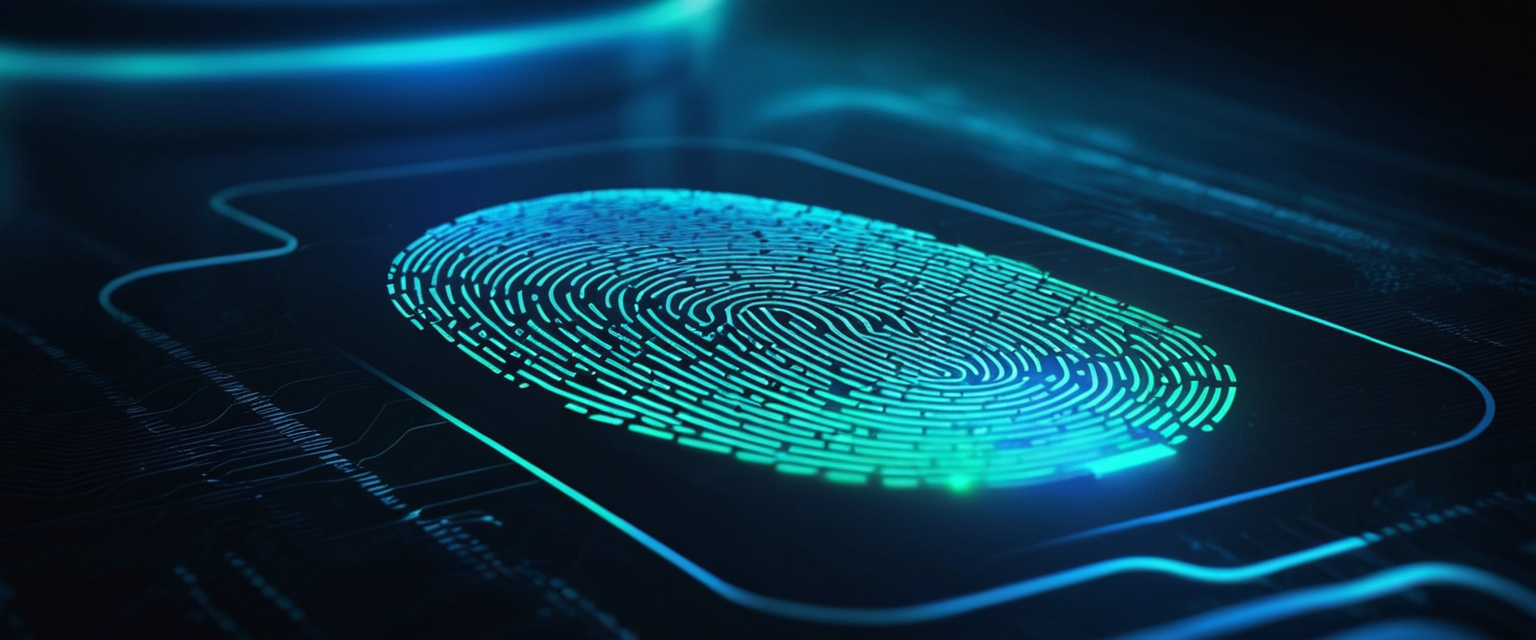
This report provides an exhaustive examination of how biometric data is collected, stored, and protected within authentication systems and password managers, exploring the intersection of privacy, security, and regulatory compliance in modern digital identity verification. The fundamental challenge in contemporary cybersecurity involves balancing the convenience and security benefits of biometric authentication against legitimate privacy concerns regarding sensitive biological data collection and retention. As biometric authentication has become increasingly integrated into password managers and multi-factor authentication systems, understanding precisely where and how this data is stored has emerged as a critical issue for both individual users and organizations seeking to implement secure authentication infrastructure while maintaining compliance with evolving privacy regulations worldwide.
The Evolution and Current State of Biometric Authentication in Digital Security
Biometric authentication represents a paradigm shift in how individuals verify their identity in digital environments. Unlike traditional password-based systems that rely on memorized credentials vulnerable to theft and social engineering, biometric systems leverage unique physical or behavioral characteristics to establish identity verification. The technology encompasses multiple modalities, including fingerprint recognition, facial recognition through advanced camera systems like Apple’s Face ID, iris and retina scanning, voice biometrics, and increasingly sophisticated behavioral patterns such as keystroke dynamics and touch gesture analysis.
The historical trajectory of biometric technology has progressed from manual fingerprint identification methods established in the late nineteenth century to automated digital systems now embedded in consumer devices. The 1960s witnessed the FBI’s adoption of computerized fingerprint storage and matching systems, while the 1970s introduced voice recognition capabilities and the 1980s brought iris recognition technology into practical deployment. The advent of digital photography in the 1990s facilitated the development of facial recognition systems, and the proliferation of smartphones with built-in biometric sensors in the 2010s democratized access to biometric authentication across consumer populations. Today, approximately 36 percent of United States adults utilize password managers, with growing numbers integrating biometric authentication methods as a secondary or primary factor in multi-factor authentication schemes.
The integration of biometric authentication into password managers and authentication systems stems from recognition that traditional single-factor password authentication faces persistent vulnerabilities despite decades of security awareness campaigns. Data breaches affecting credential databases have become alarmingly frequent, with major incidents exposing credentials affecting millions of individuals across diverse sectors. The convergence of increasing cybersecurity threats, user frustration with complex password management, regulatory requirements demanding stronger authentication mechanisms, and technological advancement enabling reliable biometric hardware has collectively driven rapid adoption of biometric authentication systems across consumer and enterprise environments.
On-Device Biometric Storage: Architecture and Privacy Preservation
The most prevalent biometric storage approach in contemporary consumer devices involves maintaining biometric data locally on the user’s device rather than transmitting it to centralized servers. Apple’s Face ID and Touch ID systems exemplify this architectural model, storing biometric data within the device’s Secure Enclave, a specialized security coprocessor physically isolated from the main processor. When a user enrolls in Face ID, the TrueDepth camera system captures thousands of invisible dots projected onto the user’s face to create an accurate depth map, supplemented by infrared imaging. This captured data undergoes sophisticated processing wherein the depth map and infrared image are transformed into a mathematical representation within the Secure Enclave, which then stores this encrypted template rather than the original facial imagery.
The critical privacy advantage of this architectural approach stems from the principle that biometric data never leaves the user’s device under normal operational circumstances. Microsoft’s Windows Hello implements analogous on-device storage mechanisms, encrypting biometric template databases locally on the device using Advanced Encryption Standard encryption with cryptographically unique keys derived from the system’s Trusted Platform Module. Each biometric database file on Windows devices receives its own randomly generated encryption key, with the database file stored in encrypted format at the system path C:\WINDOWS\System32\WinBioDatabase. Cornell University’s technology guidelines emphasize that biometric data used with Windows Hello and Touch ID never leaves the device and is never stored in a format enabling anyone to reconstruct the original fingerprint or facial image.
The transformation of raw biometric samples into mathematical templates rather than storing original biometric images represents a fundamental privacy-enhancing technique. When a user enrolls a fingerprint in Apple’s Touch ID system, the fingerprint sensor detects the touch and triggers the advanced imaging array to scan the finger, transmitting this scan to the Secure Enclave over an encrypted channel. The fingerprint scan undergoes vectorization through subdermal ridge flow angle mapping, a mathematically intensive process that discards the “finger minutiae data” required to reconstruct the actual fingerprint. The resulting map of nodes gets stored in an encrypted format readable only by the Secure Enclave, creating a biometric template that bears no resemblance to the original fingerprint and cannot be reverse-engineered to regenerate the source biometric data.
The Secure Enclave architecture itself provides additional protection layers beyond simple encryption. Apple’s Secure Enclave is equipped with dedicated secure nonvolatile storage accessible exclusively through a dedicated I2C bus, preventing any access from the main processor. All user data encryption keys are rooted in entropy stored within the Secure Enclave’s nonvolatile storage, with devices featuring A12 processors or later paired with a dedicated Secure Storage Component. The Secure Storage Component incorporates immutable ROM code, hardware random number generators, per-device unique cryptographic keys, dedicated cryptography engines, and physical tamper detection mechanisms. Communication between the Secure Enclave and Secure Storage Component occurs through an encrypted and authenticated protocol providing exclusive access to entropy.
Windows Hello for Business implements comparable hardware-based protections through the Trusted Platform Module, a specialized cryptographic processor designed to generate, store, and manage cryptographic keys while enforcing strict limits on their use. The TPM includes multiple physical security mechanisms rendering it tamper-resistant, with malicious software unable to compromise the TPM’s security functions. When a user enrolls in Windows Hello biometrics, the system creates a protector key and authentication key within the TPM’s secure container, with biometric template data encrypted and stored locally on the device such that only the Windows Hello component can access it.
Cloud-Based Biometric Authentication: Centralized Storage Models and Privacy Trade-offs
Contrasting sharply with on-device storage architectures, cloud-based biometric systems transmit biometric data or templates to external servers maintained by third-party authentication providers. These centralized approaches address significant limitations inherent to device-bound biometrics, particularly regarding cross-platform authentication and the distinction between device identity verification and actual user identity assurance. When a user accesses financial services, enrollment processes, or other high-risk activities across multiple devices, cloud-based biometric systems enable seamless authentication while maintaining identity verification standards required in regulated industries.
Cloud-based biometric authentication systems offer theoretical advantages in active threat monitoring and rapid response to emerging attack methodologies. Companies like iProov operate cloud-based systems that monitor and analyze attacks on biometric systems in real-time through their iProov Security Operations Center, applying machine learning algorithms to adapt defenses quickly to novel threats. Cloud-based architecture enables algorithm updates to be deployed instantaneously across all users rather than requiring individual device updates, creating faster and more efficient responses to new threats compared to on-device systems dependent on user-initiated software updates.
However, centralized biometric database storage introduces substantial privacy and security risks that on-device storage architectures avoid. A single breach compromising centralized biometric databases can expose millions of individuals’ immutable biological data simultaneously, creating catastrophic privacy violations. The 2019 incident exposing over 1 million fingerprints and facial recognition data from a company serving law enforcement, defense contractors, and banking institutions demonstrates the severity of these risks. Unlike passwords, which individuals can change following compromise, biometric data such as fingerprints, facial features, and iris patterns cannot be altered once stolen. This irreversible nature of compromised biometric data creates long-term security risks, as attackers can utilize stolen biometric templates indefinitely for unauthorized access and identity impersonation.
Centralized biometric systems present additional concerns regarding surveillance and function creep, where biometric data collected for one purpose becomes utilized for unrelated secondary purposes without individual consent or knowledge. An organization might legitimately collect employee facial biometrics for access control to secure facilities, then subsequently repurpose that data for employee time tracking and productivity monitoring without explicit employee consent. The 2018 Aadhaar biometric breach in India, affecting approximately 1.1 billion individuals’ biometric data, highlighted vulnerabilities inherent to centralized national biometric identification systems managing massive databases of sensitive biological information.
Distributed and Decentralized Biometric Storage: Privacy-Preserving Architectures
Emerging biometric storage models employ distributed architectures that disaggregate biometric data across multiple servers or devices, preventing any single entity from accessing complete biometric information. Distributed storage approaches leverage techniques such as multiparty computation and secret sharing, ensuring biometric data components never come together simultaneously, even during matching operations. This architectural paradigm represents a fundamental departure from both centralized systems vulnerable to catastrophic breaches and device-bound systems limited to single-device authentication.
Anonybit’s decentralized biometric authentication platform exemplifies distributed storage architecture by fragmenting biometric data into anonymized bits distributed throughout a decentralized network. Upon biometric capture, Anonybit’s system disintegrates the original biometric image, dispersing anonymized fragments throughout the network. Critically, the original biometric image is discarded entirely, and the anonymized bits are never reassembled, even during authentication matching processes. This approach ensures biometric data maintains security and privacy throughout its operational lifetime, as no single entity possesses sufficient data to reconstruct the original biometric or compromise the authentication mechanism.
The distributed model enables robust device-agnostic identity management across multiple devices and applications while maintaining decentralized authentication without requiring centralized biometric repositories. When users migrate to new devices, the system returns an authentication response confirming identity without exposing any original biometric data components, eliminating security risks inherent to transferring raw biometric data or templates between devices. This architectural approach addresses critical privacy concerns associated with centralized systems while delivering superior security compared to device-bound systems constrained to single-device operation.
Multiparty computation represents the cryptographic foundation enabling distributed biometric systems to perform matching and verification operations on encrypted data without ever decrypting it. Multiparty computation allows multiple parties to jointly compute functions over their inputs while maintaining complete privacy of those inputs from one another. In biometric contexts, MPC enables verification and matching operations to occur without any individual party or server gaining access to complete biometric information. The technique allows verification systems to confirm user identity while fragmenting data across multiple cloud providers or edge devices, with each party maintaining exclusive control over their data components and cryptographic keys.
Keyless’s approach to zero-knowledge biometrics represents an alternative privacy-preserving architecture combining on-device biometric capture with cloud-based verification without exposing biometric data to third parties. In this model, users perform biometric authentication locally on their devices, with cryptographic proofs of successful authentication transmitted to servers rather than biometric data or templates. This architecture preserves the authentication convenience of cloud-based systems while maintaining the privacy protections of on-device storage by ensuring biometric information never leaves users’ devices or reaches external servers.

Regulatory Frameworks Governing Biometric Data Collection, Storage, and Usage
The collection and storage of biometric data has become subject to increasingly stringent regulatory frameworks that establish legal requirements for obtaining consent, securing data, providing transparency, and respecting individual rights over personal biological information. The General Data Protection Regulation, effective throughout the European Union and United Kingdom since May 2018, classifies biometric data as a special category of personal information subject to enhanced legal protections and strict regulatory compliance requirements. GDPR recognizes biometric data’s sensitivity through its ability to uniquely identify individuals and mandates that organizations establish lawful bases for processing biometric information beyond simple consent, including demonstrations of substantial public interest, vital interests, or employment law compliance.
Protect Your Digital Life with Activate Security
Get 14 powerful security tools in one comprehensive suite. VPN, antivirus, password manager, dark web monitoring, and more.
Get Protected NowObtaining explicit consent under GDPR requires that consent be freely given, specific, informed, and based on unambiguous affirmative action by the data subject. Organizations must provide comprehensive information explaining precisely how biometric data will be collected, stored, used, and destroyed before obtaining individual consent. Real-time biometric identification systems, particularly those employing artificial intelligence techniques, require heightened transparency and proportionate explicit consent to ensure individuals understand the system’s capabilities and implications. GDPR grants data subjects extensive rights over their biometric data, including rights of access, rectification, erasure, and restriction of processing. Organizations must respect these rights promptly and implement robust security measures protecting biometric data against unauthorized access, accidental loss, or destruction.
The United States lacks comprehensive federal biometric privacy legislation, instead relying on a fragmented patchwork of state and sectoral regulations. Illinois’s Biometric Information Privacy Act, enacted in 2008 and among the most comprehensive state-level biometric privacy laws, defines “biometric identifiers” as fingerprints, retina scans, or iris scans, with “biometric information” encompassing any information derived from biometric identifiers or used to identify or authenticate individuals. BIPA prohibits organizations from collecting biometric data without first informing individuals that such collection will occur, disclosing the collection’s specific purpose, and obtaining written release from individuals authorizing the collection. Unlike many privacy regulations, BIPA extends protections beyond commercial uses to apply to all biometric data collection, including government and nonprofit applications.
BIPA requires that organizations collecting biometric data develop publicly available written policies specifying retention schedules and guidelines for permanently destroying biometric identifiers within three years of an individual’s last interaction with the organization or when the collection purpose no longer exists, whichever is earlier. Service providers receiving biometric data must comply with contractual obligations limiting usage to stated contractual purposes and deleting data upon completion of services. In employment contexts, BIPA mandates that employers obtain both explicit informed consent and written releases before collecting employee biometric information as a condition of employment. The Illinois Supreme Court held that informed consent must be obtained each and every time biometric information is collected, establishing comprehensive requirements for ongoing transparency and consent mechanisms.
Texas’s Biometric Capture or Use of Biometric Identifier Act, effective since April 2009, requires companies to obtain individual consent prior to capturing biometric identifiers for commercial purposes and to provide notice disclosing what biometric data collection entails. CUBI mandates that companies destroy biometric identifiers “within a reasonable time” following capture but no later than one year after the collection purpose expires, establishing clearer retention deadlines than some competing frameworks. Enforcement of CUBI rests exclusively with the Texas Attorney General, who may obtain civil penalties up to $25,000 per violation, with no private right of action available to individuals. The July 2024 settlement between Texas and Meta involving $1.4 billion for unlawful facial recognition biometric collection demonstrated escalating enforcement activity around biometric privacy violations.
Washington State’s My Health My Data Act, effective March 31, 2024, extends biometric privacy protections to personal health data not covered by HIPAA, requiring regulated entities and small businesses to obtain separate and distinct consent before collecting or sharing consumer health data beyond what is necessary to provide requested services. Colorado’s amendment to the Colorado Privacy Act, effective July 1, 2025, extends biometric privacy obligations to employers collecting worker biometric data, requiring written or electronic consent before collection and new consent if data will be used for novel purposes or involve different biometric identifier types. Colorado law requires organizations to develop and maintain biometric data policies outlining collection, storage, usage, and destruction practices, with violations resulting in civil penalties up to $20,000 per violation enforced exclusively by the Colorado Attorney General.
Integration of Biometric Authentication with Password Managers
The convergence of biometric authentication capabilities with password manager functionality represents a critical evolution in multi-factor authentication strategies, where biometric modalities serve as secondary or alternative factors for accessing password vaults containing encrypted credentials. Password managers traditionally require users to maintain a single strong master password granting access to encrypted vaults containing all stored login credentials across multiple online services. The integration of biometric authentication enables users to unlock password vaults using fingerprint, facial recognition, or other biometric modalities rather than repeatedly entering complex master passwords, significantly enhancing user experience while maintaining strong security protections.
LastPass, one of the most widely deployed password management platforms, enables users to authenticate using fingerprint recognition or facial recognition through the LastPass Authenticator app after establishing a master password. Once users verify their identity through biometric authentication on an enrolled device, they can subsequently authenticate through all future instances using biometric methods without typing the master password, though the underlying master password remains essential for account recovery and security establishment. LastPass’s architecture stores encrypted password vaults on LastPass servers with client-side encryption utilizing key derivation functions deriving encryption keys from user-provided master username and password combinations. Biometric authentication in this context authenticates the user to the device and password manager application but does not replace the fundamental security role of the master password in generating encryption keys protecting vault contents.
Keeper, identified as the best overall password manager with two-factor authentication capabilities, supports biometric authentication through fingerprint and facial recognition methods complemented by alternative authentication approaches including SMS authentication and 24-word recovery phrases. Keeper employs zero-knowledge security architecture with encryption at both device and individual record levels, contrasting with LastPass’s vault-level encryption approach. Keeper’s security model maintains that organization administrators and Keeper itself cannot access vault contents due to encryption implemented before data reaches Keeper’s servers, with decryption occurring exclusively on user devices. The platform supports multiple multi-factor authentication methods including Duo Security and RSA SecurID options, providing flexibility for organizations to select authentication methods matching specific security requirements.
Dashlane implements biometric authentication capabilities across iOS, Android, and web applications, enabling users to authorize password manager access through fingerprint or facial recognition. Dashlane encrypts vault data using Advanced Encryption Standard 256-bit encryption on user devices before transmission to Dashlane’s servers, employing Argon2, a modern robust key derivation function, to generate encryption keys from master passwords. The platform notifies users when account credentials appear in data breaches or if passwords are identified as weak or reused, providing actionable security intelligence integrated with biometric authentication workflows.
1Password maintains comprehensive support for biometric authentication across all supported platforms through integration with device-native biometric capabilities including Windows Hello, Apple Touch ID and Face ID, and Android biometric frameworks. Users can unlock their 1Password vaults using master passwords, security keys, or biometric authentication methods, with end-to-end encryption protecting vault contents such that 1Password personnel cannot access stored passwords or sensitive data. The platform stores financial information, documents, secure notes, software licenses, medical records, passport information, and extensive sensitive data categories beyond simple password management, with biometric authentication providing convenient but cryptographically protected access to this sensitive information.
Bitwarden, an open-source password manager available in free and premium tiers, implements biometric authentication on both desktop and mobile applications through device-native biometric frameworks. Bitwarden maintains strong security through open-source code transparency enabling security research and verification, end-to-end encryption of all stored data, zero-knowledge architecture preventing Bitwarden or external parties from accessing vault contents, and comprehensive support for two-factor authentication methods including authenticator apps, hardware keys, and biometric recognition. The open-source model provides users with transparency regarding how biometric authentication integrates with encryption mechanisms and vault security, addressing concerns some users harbor regarding proprietary password manager security claims.
Passkeys: Privacy-Preserving Authentication Without Traditional Biometric Storage
Passkeys represent an emerging authentication paradigm that fundamentally reimagines how biometric data integrates with authentication systems by eliminating the need to store biometric templates on servers or in centralized repositories. A passkey consists of a private cryptographic key stored locally on a user’s device, with the public key portion registered with websites or applications. When users authenticate using passkeys, their device performs biometric verification locally, and upon successful verification, the private key signs a cryptographic challenge proving possession without exposing biometric data to websites or external services.
The privacy advantages of passkeys relative to traditional biometric systems stem from the architecture’s fundamental separation between biometric verification and credential management. When using a passkey, users’ fingerprints, facial recognition data, or unlock PINs remain exclusively on users’ devices and never transmit to websites or service providers. Websites cannot obtain any biometric information through passkey authentication protocols; they receive only confirmation that “user verification” occurred successfully. This architectural model ensures that websites learn neither whether users possess passkeys nor any biometric characteristics, eliminating the privacy risks associated with centralized biometric databases or service providers maintaining biometric templates.
Passkeys stored in cloud-synced password managers like iCloud Keychain and Google Password Manager remain protected through end-to-end encryption, ensuring only users can access their passkey credentials. When syncing passkeys across devices through cloud services, the synchronization process encrypts passkey data with keys derived from device-specific entropy and user passcodes, preventing cloud providers from decrypting or accessing passkey contents. This architecture combines the convenience of cloud synchronization enabling access from any device with the privacy protections ensuring biometric data never leaves users’ devices and cloud providers cannot access encrypted credentials.
The Electronic Frontier Foundation notes that passkeys present superior privacy characteristics compared to federated social login systems, which enable cross-site tracking by allowing companies to determine which websites users visit and correlate browsing patterns across services. Each passkey users create is unique to specific websites or applications, preventing any party from correlating separate site-specific identities even if they coordinate behind the scenes. This design eliminates the cross-site tracking vulnerabilities inherent to social login systems like “Sign in with Google” or “Login with Facebook,” which create persistent cross-service identifiers enabling behavioral tracking.
However, passkey implementations introduce certain privacy considerations requiring user awareness. Websites can request information about security keys storing passkeys, including manufacturer and model details, potentially enabling device identification if browsers don’t enforce privacy-protecting policies limiting this information sharing. Some security keys maintain a single “signature counter” for all passkeys rather than per-site counters, potentially enabling cross-site identity correlation through counter value analysis. Password managers storing passkeys can reveal to websites which password manager a user employs through authentication protocol exchanges, though this represents minimal additional information exposure compared to centralized biometric systems.
The Challenge of Deepfakes and Spoofing: Threats to Biometric Authentication Integrity
Despite technological advances enabling sophisticated biometric authentication systems, emerging threats from artificial intelligence-generated deepfakes and physical spoofing techniques threaten the reliability of biometric verification mechanisms, particularly facial recognition systems. Deepfake technology employs generative adversarial networks and advanced machine learning techniques to produce highly realistic synthetic faces and facial expressions indistinguishable from genuine biometric samples. When deepfake videos or images are presented to facial recognition systems, the systems fail to differentiate between authentic facial biometrics and AI-generated counterfeits, enabling attackers to bypass facial recognition authentication by presenting deepfakes to sensors.
Research has documented multiple concerning deepfake-based attacks against facial biometric systems. Researchers successfully created deepfake videos of smartphone owners’ faces and utilized these synthetic videos to unlock phones, revealing critical vulnerabilities in mobile device security that relies on facial recognition. Another incident involved AI services companies conducting experiments where deepfake videos enabled unauthorized access to secure corporate areas, demonstrating deepfakes’ potential for espionage and facility breach. Banking system incidents have documented deepfakes impersonating high-ranking executives during video verification processes for financial transactions, with deepfakes convincing facial recognition software of legitimacy and enabling transfer of significant funds. Law enforcement agencies have identified cases where deepfakes were suspected of enabling identity fraud, with criminals potentially using deepfake technology to circumvent surveillance systems or create false alarms complicating investigations.
Liveness detection technology has emerged as a critical countermeasure against deepfake attacks, utilizing algorithms to verify that a live person is generating biometric data in real-time rather than presenting prerecorded, replayed, or artificially generated biometric samples. Liveness detection distinguishes between live humans and deepfake doppelgangers through analysis of micro-expressions, involuntary eye movements, skin texture changes, and behavioral patterns that synthetic media cannot replicate with perfect fidelity. Modern liveness detection systems employ deep learning architectures including 3D Convolutional Neural Networks for spatial-temporal analysis, Vision Transformers for fine-grain texture detection, and Hybrid CNN-LSTM architectures analyzing movement timing patterns.
Liveness detection methodologies fall into two primary categories: active and passive approaches. Active liveness detection prompts users to perform unexpected actions such as specific facial expressions, head movements, or vocalized statements, then analyzes these actions for indicators of AI generation or spoofing attacks. Passive liveness detection occurs without explicit user challenges, analyzing captured biometric data for characteristics indicating live presence versus prerecorded or artificial generation. Advanced passive liveness detection employs rPPG (remote photoplethysmography) technology detecting subtle blood flow changes in facial skin, measures pupillary reflex responses, analyzes micro-expressions and gaze patterns, and employs multi-modal sensor fusion combining RGB imaging, infrared sensing, and depth capture.
The evolution of liveness detection reflects the adversarial nature of biometric security, with researchers and vendors continuously advancing defense capabilities against increasingly sophisticated attack techniques. Earlier liveness detection systems relied on simple blink detection or “turn your head” instructions easily bypassed with video replays or printed masks, prompting evolution toward contemporary approaches achieving iBeta Level 2 certification with sub-second capture speeds and 50 percent higher accuracy than previous generations. However, liveness detection introduces its own challenges, including false positive rates denying legitimate users access and computational overhead impacting authentication speed and user experience.

Best Practices for Biometric Data Protection and Privacy Preservation
Organizations and individuals implementing biometric authentication systems should adopt comprehensive strategies combining technical safeguards, legal compliance, transparent data practices, and user empowerment mechanisms to protect biometric information while maintaining authentication system functionality. Strong encryption remains fundamental to biometric data protection, with organizations encrypting biometric templates both in transit across networks and at rest in storage systems. Organizations should implement encryption algorithms meeting modern cryptographic standards, with particular attention to ensuring encryption keys remain secure from unauthorized access and that key management systems employ robust protection mechanisms.
Users should maintain strict control over biometric data by preferentially storing biometric information on their personal devices rather than relying on centralized systems whenever feasible. On-device biometric storage provides users with physical possession and control of biometric data, reducing risks associated with remote breaches affecting centralized databases. Where cloud synchronization is desired for convenience across multiple devices, users should select providers implementing end-to-end encryption ensuring only users possess decryption keys, preventing cloud providers from accessing biometric data even during synchronization operations.
Organizations collecting biometric data must obtain explicit informed consent that is freely given, specific, informed, and based on unambiguous affirmative action, with consent documentation maintained as evidence of proper consent procedures. Consent mechanisms should communicate clearly what biometric data is collected, why collection occurs, how data will be used, how long data will be retained, and whether data will be shared with third parties. Organizations should provide separate consent forms for initial collection and any new purposes or different biometric modalities, respecting BIPA requirements for consent renewal whenever collection circumstances change.
Privacy policies and data handling procedures should be clearly documented and made publicly accessible, enabling individuals to understand organizational biometric data practices. Retention schedules specifying when biometric data will be destroyed should align with regulatory requirements while minimizing retention duration to what is operationally necessary. Organizations should implement deletion procedures that permanently destroy biometric data rather than merely deactivating access, with documented evidence of destruction maintained as compliance proof.
Security audits should be conducted regularly to verify that biometric data protection mechanisms function effectively and that no unauthorized access has occurred. Organizations should maintain monitoring systems detecting suspicious access patterns, unusual authentication attempts, or indicators of compromise affecting biometric data systems. Incident response procedures should establish protocols for responding to suspected biometric data breaches, including notification obligations to regulatory authorities and affected individuals within timeframes specified by applicable regulations.
Users should understand and evaluate privacy implications of different biometric authentication architectures before adopting systems. Device-bound biometric storage provides superior privacy compared to centralized systems but limits authentication to specific devices. Cloud-based systems offer cross-platform convenience at the cost of trusting service providers with biometric data. Distributed and decentralized architectures emerging with technologies like multiparty computation may offer optimal privacy characteristics but require technical sophistication and aren’t yet widely deployed. Passkeys represent a privacy-preserving approach where biometric data never leaves users’ devices and websites never obtain biometric information, though this technology is still achieving mainstream adoption.
Regulatory and Organizational Compliance with Biometric Privacy Requirements
Implementing compliant biometric authentication systems requires organizations to address complex and sometimes conflicting regulatory requirements across multiple jurisdictions. Organizations operating internationally must navigate GDPR requirements in European markets, BIPA compliance in Illinois, state-specific requirements in Texas, Washington, Colorado, and other jurisdictions, with varying definitions of covered biometric identifiers and divergent legal obligations. Organizations should conduct jurisdiction-specific privacy impact assessments identifying applicable regulations before implementing biometric systems, establishing legal review processes ensuring compliance as regulations evolve.
Master password protection remains fundamental to password manager security even where biometric authentication is implemented as a secondary factor. Users should establish strong master passwords resistant to brute-force attacks, dictionary attacks, and social engineering attempts. Recommended master password construction employs long passphrases constructed from unrelated random words rather than guessable personal information, dates, or common phrases. NIST guidelines emphasize password length over forced complexity, recommending that master passwords meet or exceed 16 characters and avoiding mandatory periodic resets unless compromise is suspected.
Multi-factor authentication combining biometric authentication with supplementary factors provides defense-in-depth protection against compromise of any single factor. Organizations should require multi-factor authentication for sensitive operations including password manager unlocking, administrative functions, and access to accounts containing sensitive personal or financial information. Biometric multi-factor authentication combines “something you are” (biometric characteristic) with “something you know” (master password) or “something you have” (security key), creating authentication requirements that attackers cannot satisfy through single compromise vectors.
Organizations should maintain comprehensive audit logs documenting all biometric authentication events, access to biometric data systems, modifications to authentication policies, and any incidents or anomalies potentially indicating unauthorized access. Audit logs should include timestamps, user identities, authentication methods utilized, success/failure indicators, and contextual information enabling investigation of suspected security incidents. Regular review of audit logs enables organizations to identify suspicious patterns and respond to potential compromises before substantial damage occurs.
The Future of Biometric Authentication: Emerging Technologies and Privacy Evolution
The biometric authentication landscape continues evolving rapidly as technologies mature and new approaches emerge addressing limitations of current systems. Zero-knowledge proof technologies promise to enable identity verification without revealing underlying biometric data or other identifying information to verifying parties, potentially combining optimal security with minimal privacy exposure. Zero-knowledge proof systems allow parties to prove possession of information or truth of claims without disclosing the information itself, through cryptographic mechanisms where prover and verifier engage in protocols demonstrating knowledge without revealing it.
Multi-party computation technology increasingly influences biometric system design, with companies like Partisia developing practical MPC applications for digital identity and biometric verification. Partisia’s 2025 proof-of-concept in Japan combining Toppan’s facial recognition with decentralized technology and eIDAS 2.0 standards demonstrated MPC’s potential for enabling biometric matching without decryption of biometric data. The system matches facial biometrics using MPC such that neither Partisia nor the system operator possesses complete biometric information—verification occurs through encrypted data without revealing underlying facial characteristics to any party.
The convergence of biometric authentication with blockchain and self-sovereign identity frameworks is advancing decentralized identity systems where individuals maintain cryptographic control over their identity attributes without dependence on centralized authorities. These systems enable selective disclosure of identity information, where individuals prove possession of identity attributes without revealing unnecessary information, and grant individuals complete control over when and with whom identity information is shared.
Behavioral biometrics including keystroke dynamics, touch gesture analysis, and motion patterns represent lower-cost authentication approaches than physiological biometrics, offering continuous authentication throughout user sessions rather than one-time authentication at access initiation. Behavioral biometrics employ sensors readily available on modern devices including accelerometers, gyroscopes, magnetometers, and touch sensors, avoiding additional hardware requirements. These approaches present distinct privacy tradeoffs, as behavioral biometric systems require continuous monitoring of user behavior patterns, raising privacy concerns regarding data collection scope and duration.
Where Your Biometrics Settle: A Final Privacy Perspective
The integration of biometric authentication into password managers and multi-factor authentication systems represents a significant evolution in digital identity verification, offering security and convenience advantages over traditional password-only approaches while introducing complex privacy, regulatory, and technical considerations. Biometric data storage occurs across multiple architectural models, from on-device storage within Secure Enclaves and Trusted Platform Modules preserving maximum user privacy, to cloud-based centralized systems enabling cross-platform authentication at privacy costs, to emerging distributed and decentralized architectures attempting to balance convenience with privacy preservation.
Understanding precisely where biometric data is stored, how it is encrypted, who can access it, and under what circumstances it is retained remains essential for informed decision-making by individuals and organizations. On-device storage models preserve user privacy through maintaining biometric data exclusively on user devices and preventing third-party access, though limiting authentication to specific devices. Cloud-based systems enable convenient cross-platform authentication at the cost of trusting service providers with biometric templates and accepting associated breach risks. Passkeys emerging as privacy-preserving authentication mechanisms eliminate biometric template storage entirely by maintaining credentials on devices and performing local verification before cryptographic signing.
Regulatory frameworks including GDPR, BIPA, and emerging state-level laws establish evolving requirements for biometric data collection, storage, usage, and retention. Organizations must implement robust consent mechanisms, maintain transparent data practices, establish appropriate data retention and deletion schedules, conduct regular security audits, and prepare incident response procedures addressing biometric data breaches. Individuals should evaluate privacy implications of different biometric authentication architectures, select systems aligning with personal privacy preferences, maintain strong master passwords even where biometric authentication is implemented as secondary factors, and remain vigilant regarding emerging threats like deepfakes potentially compromising biometric authentication systems.
The future of biometric authentication will likely involve increasing integration of privacy-enhancing technologies including zero-knowledge proofs, multiparty computation, and decentralized identity systems providing users with greater control over biometric information while maintaining strong security properties. The tension between authentication convenience, robust security, and privacy preservation will continue driving technological innovation, regulatory evolution, and ongoing debate regarding appropriate balances between competing objectives. Organizations and individuals implementing biometric systems must remain informed regarding these developments while maintaining commitment to protecting sensitive biological information against unauthorized access, misuse, and abuse.






